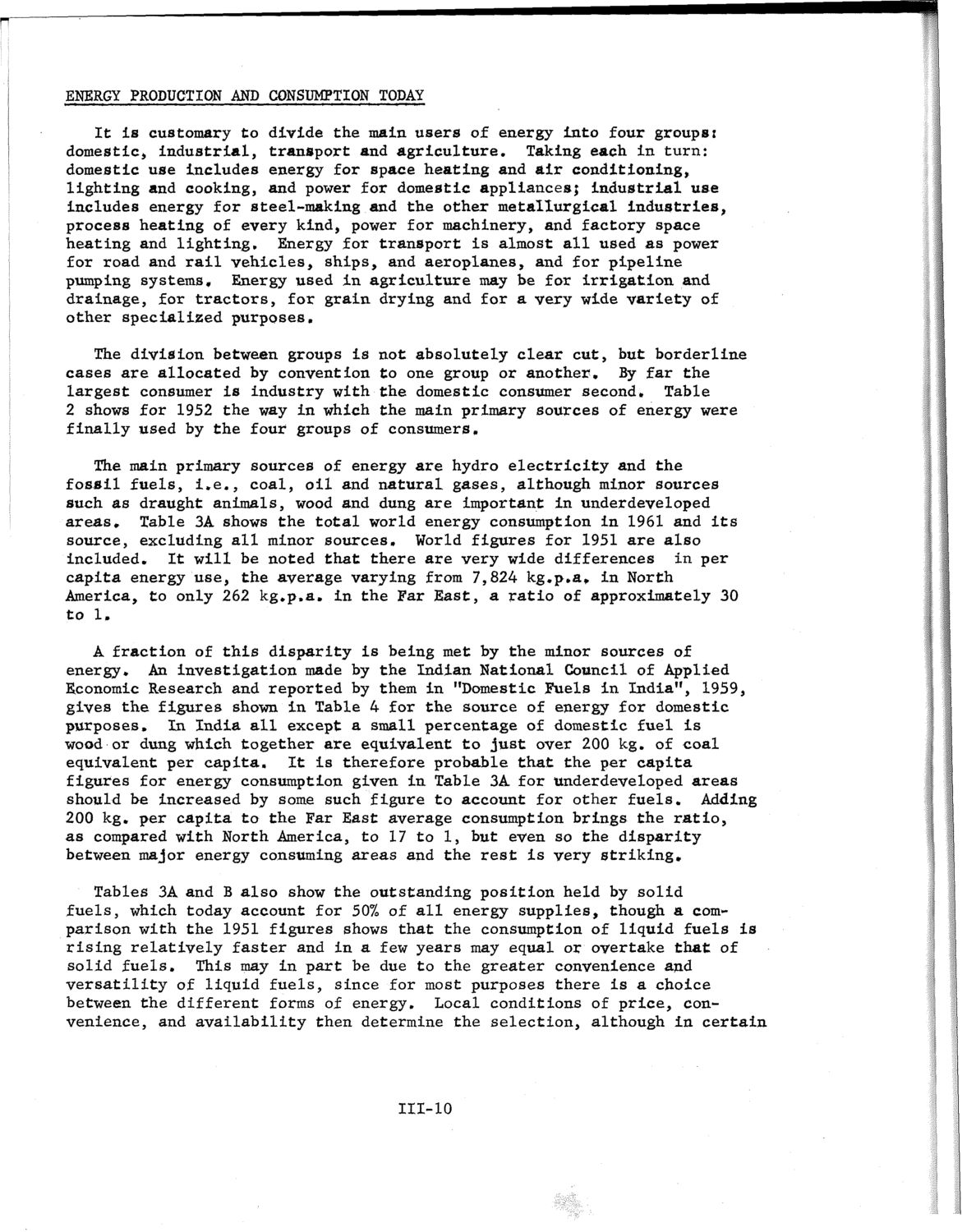| |
| |
Caption: SWE - Proceedings of the First International Conference of Women Engineers and Scientists
This is a reduced-resolution page image for fast online browsing.

EXTRACTED TEXT FROM PAGE:
ENERGY PRODUCTION AND CONSUMPTION TODAY It is customary to divide the main users of energy into four groupBs domestic, industrial, transport and agriculture. Taking each in turn: domestic use includes energy for space heating and air conditioning, lighting and cooking, and power for domestic appliances; industrial use includes energy for steel-making and the other metallurgical industries, process heating of every kind, power for machinery, and factory space heating and lighting. Energy for transport is almost all used as power for road and rail vehicles, ships, and aeroplanes, and for pipeline pumping systems. Energy used in agriculture may be for irrigation and drainage, for tractors, for grain drying and for a very wide variety of other specialized purposes. The division between groups is not absolutely clear cut, but borderline cases are allocated by convention to one group or another. By far the largest consumer is industry with the domestic consumer second. Table 2 shows for 1952 the way in which the main primary sources of energy were finally used by the four groups of consumers. The main primary sources of energy are hydro electricity and the fossil fuels, i.e., coal, oil and natural gases, although minor sources such as draught animals, wood and dung are important in underdeveloped areas. Table 3A shows the total world energy consumption in 1961 and its source, excluding all minor sources. World figures for 1951 are also included. It will be noted that there are very wide differences in per capita energy use, the average varying from 7,824 kg.p,a, in North America, to only 262 kg.p.a. in the Far East, a ratio of approximately 30 to 1. A fraction of this disparity is being met by the minor sources of energy. An investigation made by the Indian National Council of Applied Economic Research and reported by them in "Domestic Fuels in India", 1959, gives the figures shown in Table 4 for the source of energy for domestic purposes. In India all except a small percentage of domestic fuel is wood or dung which together are equivalent to just over 200 kg. of coal equivalent per capita. It is therefore probable that the per capita figures for energy consumption given in Table 3A for underdeveloped areas should be increased by some such figure to account for other fuels. Adding 200 kg. per capita to the Far East average consumption brings the ratio, as compared with North America, to 17 to 1, but even so the disparity between major energy consuming areas and the rest is very striking. Tables 3A and B also show the outstanding position held by solid fuels, which today account for 50% of all energy supplies, though a comparison with the 1951 figures shows that the consumption of liquid fuels is rising relatively faster and in a few years may equal or overtake that of solid fuels. This may in part be due to the greater convenience and versatility of liquid fuels, since for most purposes there is a choice between the different forms of energy. Local conditions of price, convenience, and availability then determine the selection, although in certain 111-10
| |